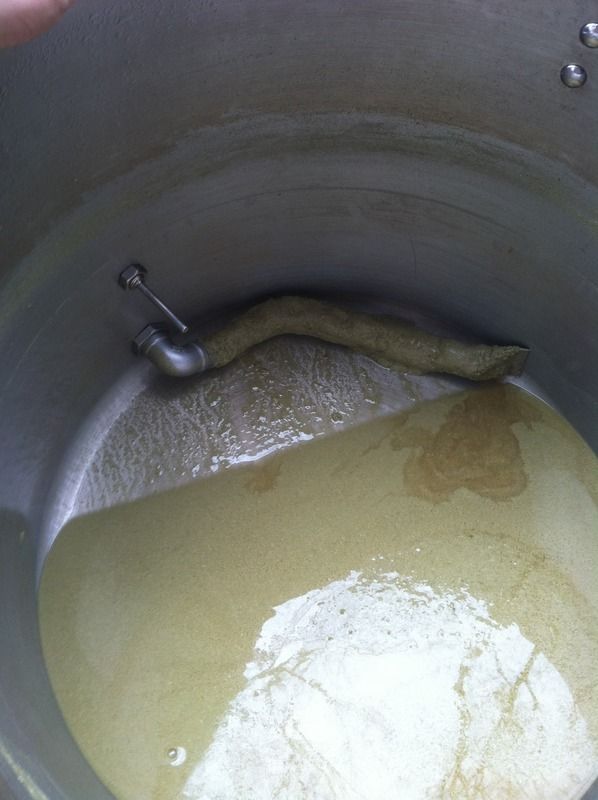kombat
Well-Known Member
For my first hundred or so brews, I used a cylindrical "hop screen" that hangs on the inside rim of my boil kettle to contain my pellet hops. In addition, I used a plate chiller to chill my wort, recirculating it back into the boil kettle until the wort has cooled to the desired temperature. Finally, I'd drain the whole kettle into my fermenter, trub and all.
However, I've modified my kettle by adding a whirlpool port, and I now want to add the hops directly to the kettle instead of in the hop screen. After the boil, I whirlpool for 5 minutes then let it stand for another 15 to settle out, before introducing my plate chiller into the setup and running the wort through the chiller directly into the fermenter. I have a side pickup tube on my kettle's outlet port, so I end up with very clear wort. The hot break and hop debris accumulates in the center of the kettle in a little cone, and I draw the clear wort from the side.
My concern is avoiding clogging my plate chiller with this hot break and hop matter. Under my old configuration, the hot break would still get sucked through the chiller, but it never caused a blockage. And with the new setup, by the time I add the plate chiller, the break matter and hop gunk are in the middle, and don't go through my chiller.
The problem is - what if I want to do a hopstand? I'd need to chill the wort down to 180° F or so. How can I do that with my plate chiller, while still keeping the hops and hot break from clogging it? Does anyone else brew in this way, and if so, how did you overcome this problem?
However, I've modified my kettle by adding a whirlpool port, and I now want to add the hops directly to the kettle instead of in the hop screen. After the boil, I whirlpool for 5 minutes then let it stand for another 15 to settle out, before introducing my plate chiller into the setup and running the wort through the chiller directly into the fermenter. I have a side pickup tube on my kettle's outlet port, so I end up with very clear wort. The hot break and hop debris accumulates in the center of the kettle in a little cone, and I draw the clear wort from the side.
My concern is avoiding clogging my plate chiller with this hot break and hop matter. Under my old configuration, the hot break would still get sucked through the chiller, but it never caused a blockage. And with the new setup, by the time I add the plate chiller, the break matter and hop gunk are in the middle, and don't go through my chiller.
The problem is - what if I want to do a hopstand? I'd need to chill the wort down to 180° F or so. How can I do that with my plate chiller, while still keeping the hops and hot break from clogging it? Does anyone else brew in this way, and if so, how did you overcome this problem?



